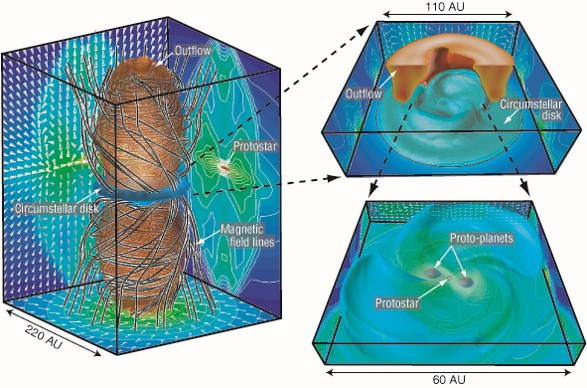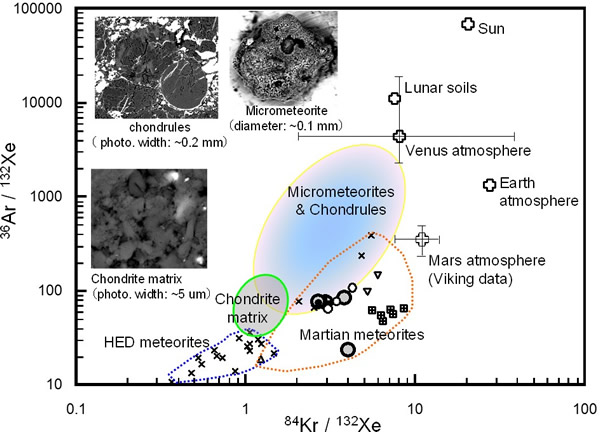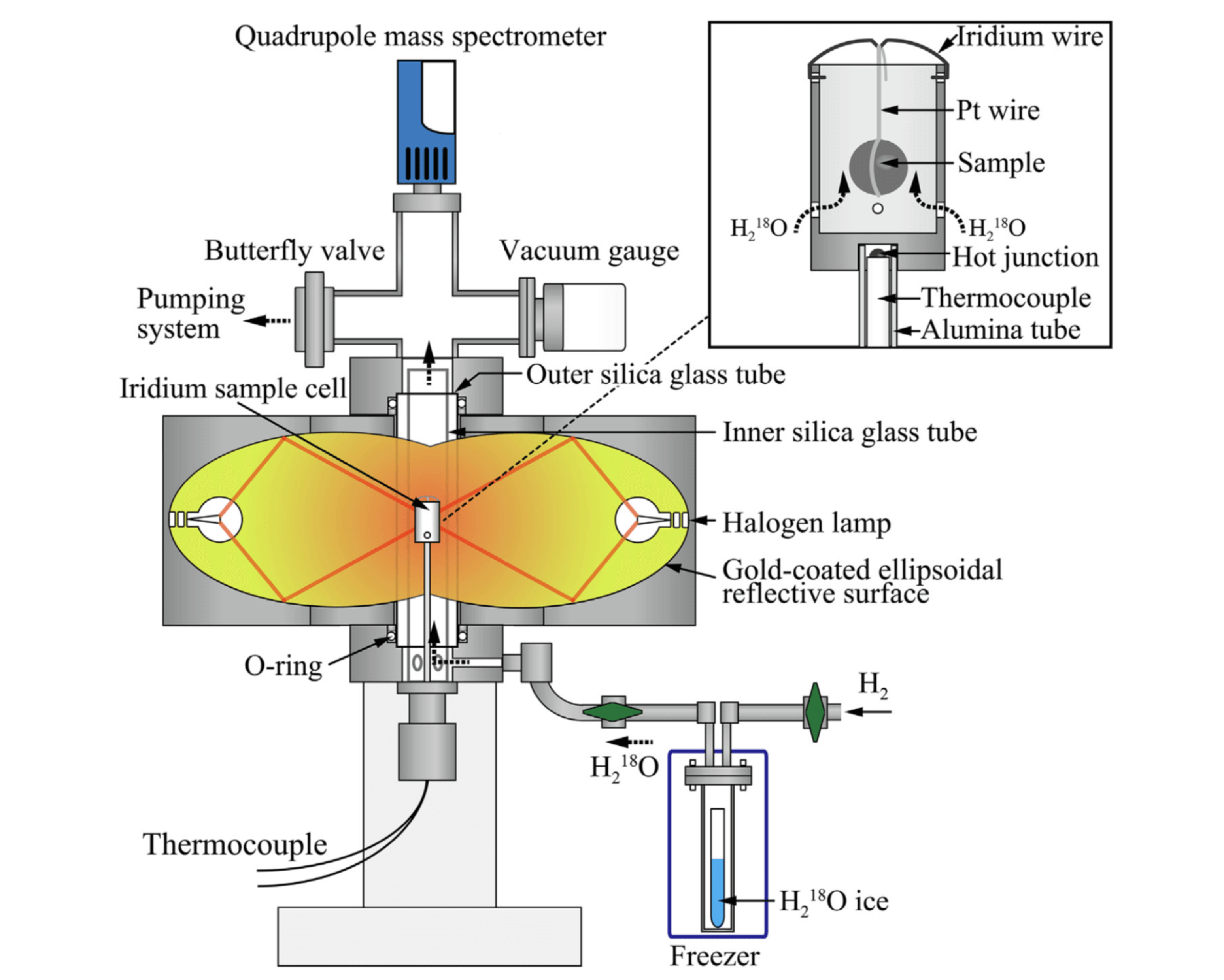
HOME / Departments / Earth and Planetary Sciences / Formation and Evolution of Planetary Systems
Formation and Evolution of Planetary Systems
-
- MACHIDA Masahiro, Professor
- OKAZAKI Ryuji, Associate Professor
- YAMAMOTO Daiki, Assistant professor
- Our group studies various subjects in the frontiers of the formation and evolution of the solar system and extra-solar planetary systems by means of theoretical physics, numerical simulation, analysis of extraterrestrial materials, and experimental simulation in the laboratory. These include: Theoretical study on the formation of stars and planets in molecular cloud cores; Theoretical studies on the motion of dust particles and gas in protoplanetary disks, and formation of planetesimals; Planetary material science based on elemental and isotopic compositions of extraterrestrial material; experimental study on the formation and evolution of extraterrestrial materials.
1. Theoretical study on the formation of stars and planets in molecular cloud cores
Stars and planets form in gravitationally collapsing clouds. Using numerical simulation, we calculate the cloud evolution from the prestellar stage until the star and planet formation epoch. Simulation results are shown in the below. In the left panel, the protostellar outflow and twisted magnetic field lines are presented. The protostellar outflow has a speed of about 100,000 km hr−1 and plays a critical role in the star formation process. In the right panels, the circumstellar disk and two proto-planets are seen around the protostar. In the very early phase of the star formation, the disk becomes gravitationally unstable and fragmentation tends to occur because the disk mass is comparable to the protostellar mass. Finally, proto-planets are born in the disk. Comparing simulation results with observations, we can unveil the star and planet formation process.

2. Theoretical studies on the motion of dust particles and gas in protoplanetary disks, and formation of planetesimals
Planets are considered to form in a protoplanetary disk that revolves around a star. A protoplanetary disk is composed mainly of hydrogen and helium. However, a protoplanetary disk also contains almost all natural elements. In the inner region of protoplanetary disk, dust particles are made of silicates and iron metal. In the outer region of a protoplanetary disk, water ice is added to the components of dust particles. Dust particles grow by mutual sticking when they collide. Dust particles migrate due to the gas-drag force as well as the gravitational force. An assemblage of dust particles may collapse to form planetesimals, i.e. building blocks of planets. We investigate the condition for the formation of planetesimals by means of theoretical studies.
3. Planetary material science based on elemental and isotopic compositions of extraterrestrial material
Chemical and isotopic compositions of the solar system materials are rich in diversity, and they could afford a clue to their origin and evolution. As an example, elemental compositions of noble gases in planetary materials are shown in the figure below. The composition of the sun plots at the upper right in the figure. Lunar soils, cosmic dust (micrometeorites), and some of chondrules have a composition located at the lower left from the sun. It is suggested that these materials contain noble fractionated solar gases, and they have been exposed to the solar wind. On the other hand, fine-grained materials in chondrites (called matrix) filling the interstices between chondrules and other inclusions contain a noble gas component, called Q gas, that is rich in heavy elements compared to the solar composition and thought to be the solar nebula origin. In addition, basaltic Martian meteorites contain a gas similar to the Martian atmosphere. It is thought that a part of the Mars atmosphere have been incorporated into the rocks at the time of impact on Mars. Based on chemical and isotopic compositions of noble gas and other elements, we aim to elucidate the origin and evolution of the planetary materials.

4. Experimental study under simulated solar protoplanetary disk conditions
The chemical characteristics and variation of the Solar System bodies can be interpreted as a result of the formation and evolution of primitive planetary materials through various chemical reactions in the protoplanetary disks. Investigations of chemical reactions that occurred in the protosolar disks in the laboratory and detailed comparisons of experimental samples with the extraterrestrial materials would make us possible to get information about the conditions under which extraterrestrial materials were processed. For this purpose, some heating furnaces capable to simulate protosolar disk-like low-pressure conditions were newly developed (an example shown in the figure below), and experimental analogs are heated under various heating conditions in the furnaces. We aim to constrain the physicochemical conditions of the protosolar disks based on the experimentally determined mechanism and kinetics of chemical reactions.
